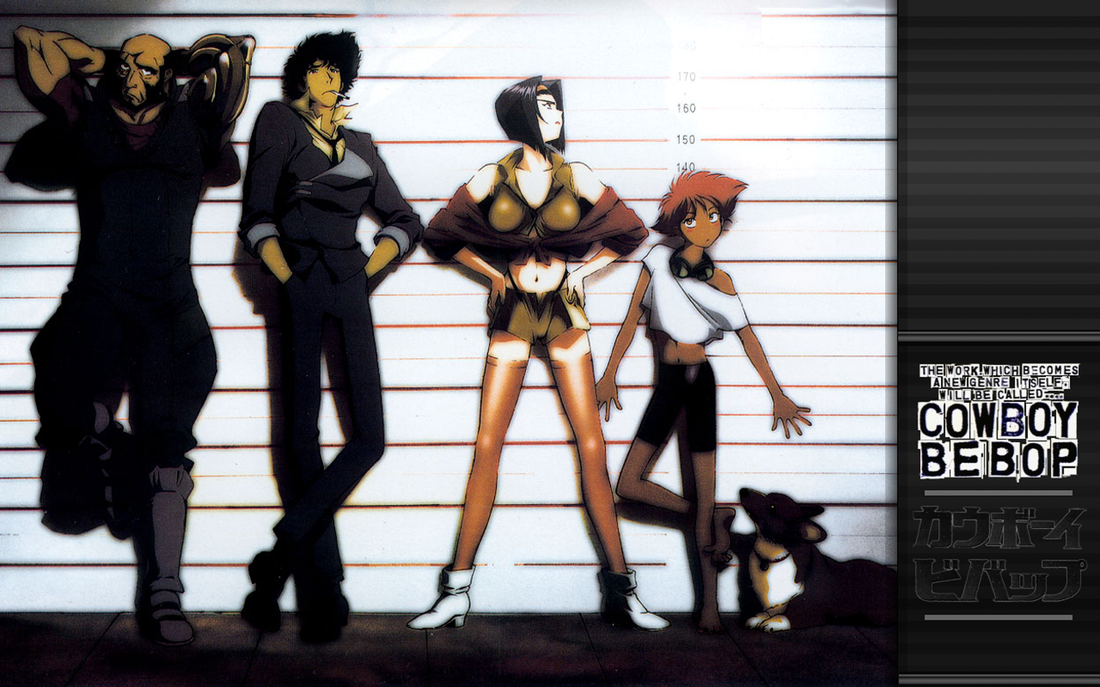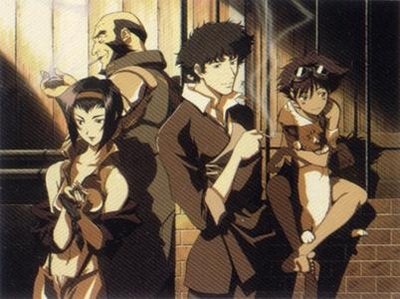Genre: Science Fiction, Western, Film Noir, others*
Creator: Shinichirō Watanabe
Studio: Sunrise
Length: 26 sessions
Year: 1998
Highlights: Fantastic music, genre roulette, and Spike Spiegel
When I originally formulated the idea of what would eventually become this series of article on anime, my primary focus was to engage those people who are interested in anime but have little experience with it. I wanted to write about series that are high quality, but are also easy to start and follow for someone who is new to the medium. This is still the case, but I believe the time has come when I can start covering series that are a little more advanced than those we have covered so far. From now on, much of what will be covered will be series and films higher up on in the hierarchy of anime, which are often more complex but correspondingly more acclaimed. This is not to say any of the previous series and films are bad (I have seen the entirety of every series I write about, and I only write about the good ones), but if you are joining us on this anime journey from now on, these series may not be the best ones to start with. All of that being said, this week we are talking about a series considered one of the greatest ever made, and one of my personal favorites: Cowboy Bebop.
Cowboy Bebop takes place in the year 2071, and is about the crew of the spaceship Bebop. They are bounty hunters, chasing quarry across the solar system to capture and turn into the police for their reward money. The main character is Spike Spiegel, a calm and collected man who likes to live his life according to the “flow”, with a mysterious past and significant skills in the martial art Jeet Kune Do. His partner is Jet Black, a former cop and the eldest member of the crew, and the owner of the Bebop. Joining them is Faye Valentine, a beautiful woman who also has a cloudy past along with a habit for gambling. Providing computer expertise is Ed (full name Edward Wong Hau Pepelu Tivrusky IV), a 13 year-old with amazing hacking skills but a highly eccentric personality. Finally, there is Ein, a Welsh corgi who may or may not actually be the most intelligent member of the crew.
And all of that is just the major genres; Cowboy Bebop has elements of numerous others. The series seemed willing to try almost any genre at least once- for example, there is one episode that spoofs the Ridley Scott movie Alien, another that ventures into horror territory, and even one that parodies the Blaxploitation genre. These tendencies are furthered enforced by the often anachronistic setting, such as having 20th century handguns side-by-side with domed cities on Mars and old fashioned dogfights in space. In addition, the series will swing broadly back and forth between comedy and drama, although it is most fondly remembered for its drama-focused episodes, especially those dealing with Spike’s past.
Most commonly the music consists of American jazz, but numerous other styles appear as well, from pop to blues to folk to rock and heavy metal (it’s also telling that the other primary inspiration for Spike was Bob Dylan). Similarly to how the show refuses to stay in one genre, the music is often a mish-mash of styles and genres. Two of my personal favorites are “Green Bird”, a haunting vocal and piano piece sung in a made-up language that takes inspiration from traditional church choirs, and “Space Lion”, a melancholy jazz piece with a vocal section inspired by Native American tribal chants. The music of Cowboy Bebop has become legendary within the anime community (especially its opening song “Tank!” and its closing song “The Real Folk Blues”), and the music is such high quality that many music aficionados are fans of it without even realizing that comes from an anime series.


 RSS Feed
RSS Feed
